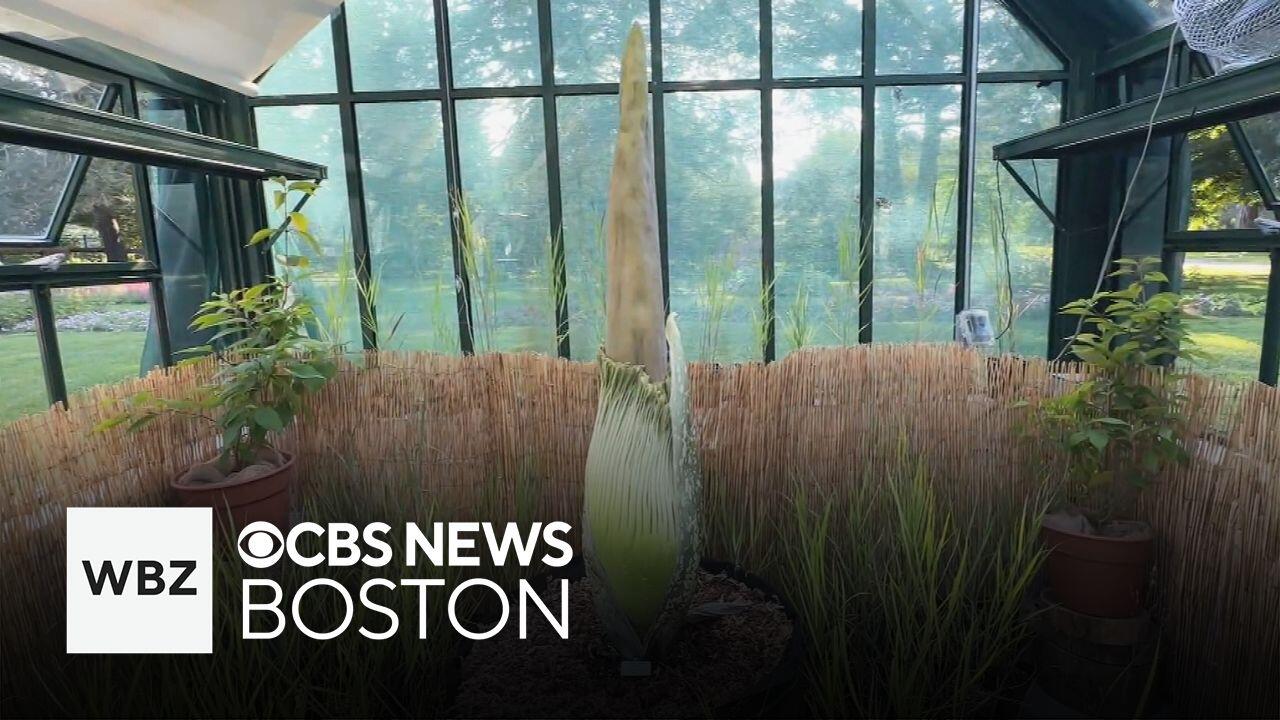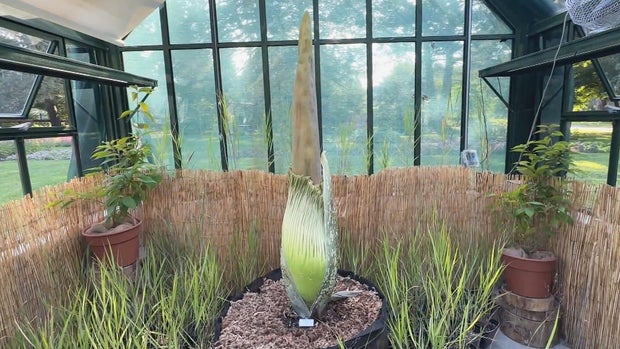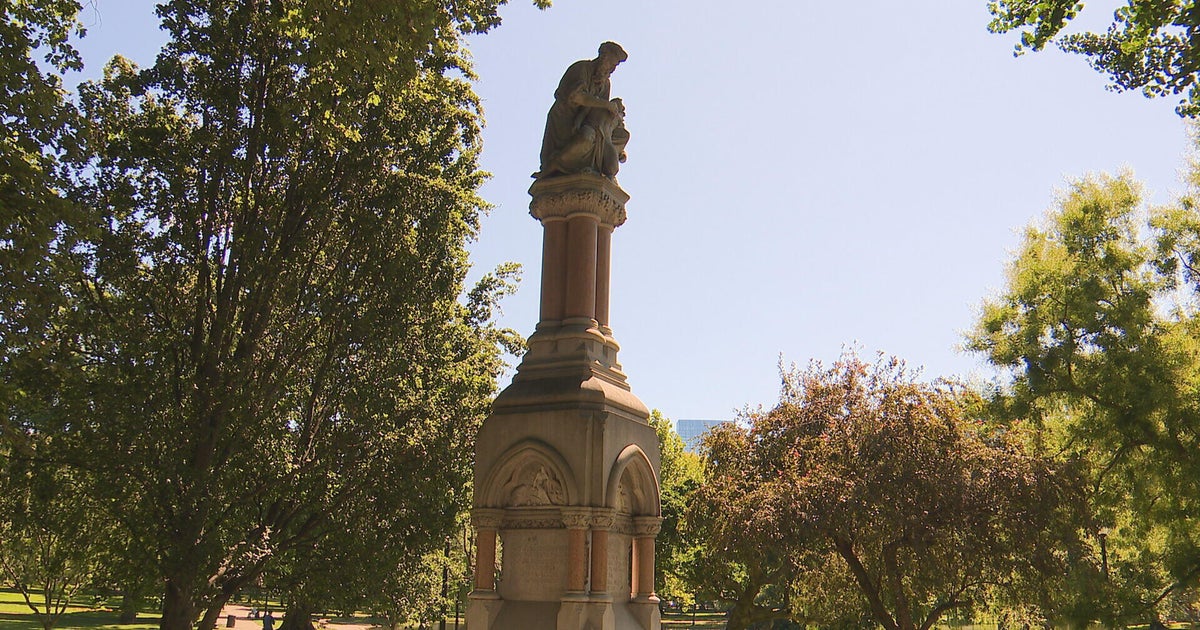A rare corpse flower is about to bloom in Massachusetts. How you can see and smell it.
A rare corpse flower is about to bloom in Massachusetts. The Massachusetts Horticultural Society in Dover is delighted to host the rare amorphophallus titanum for its long, long-awaited bloom.
Pollinating insects aren't the only things buzzing in the Garden at Elm Bank. "There's all sorts of exciting things like that in the plant world and this is one of them," said James Hearsum.
Only 24 hours in bloom
It grows from a seed for about a decade before its literal moment in the sun: 24 hours in bloom. Affectionately named Eliza, it was grown in a research greenhouse at Wheaton College, which generously shared the plant so that more people could see it.
"It's like any natural thing in the world that's unique or outside your experience. It gives you that experience of awe. It's phenomenal, it's amazing. For many people seeing one of these might be a once or twice in a lifetime kind of thing," said Hearsum, who is president and executive director of the Massachusetts Horticultural Society.
And there's a reason it's known as the corpse flower. You'll smell it before you see it.
What the corpse flower smells like
"It's going to smell like dead bodies. Like really old rotten dead flesh. It makes you physically gag. It is cool, people will come in and see it for the experience, but they'll probably keep moving because it's going to be kind of unpleasant smelling in here," he explained.
The Massachusetts Horticultural Society, which has about 3,500 members, hopes new visitors will come for the corpse flower, and stay for their stunning property - which offers sunflower and tulip festivals, art classes, and workshops for adults and children that run all year long.
"If you ever need an escape and you can't get away, you come to Elm Bank. It really is like a hidden jewel. You can come any season, they have concerts, it's just a very peaceful, tranquil place hidden away right here. It's amazing that we have this. It's almost like as if you took a museum and it's your outdoor museum of nature and art," said volunteer Lisa Heyison.
Back on bloom watch, clues like the ruffled leaves and rising temperature suggest the big show between Thursday night and Sunday. When that happens, they'll , potentially late into the night to accommodate interest.
"As long as people want to see it, then we'll stay open and we'll have people see it but you've got to be quick. It's 24-36 hours and it's done," said Hearsum.






